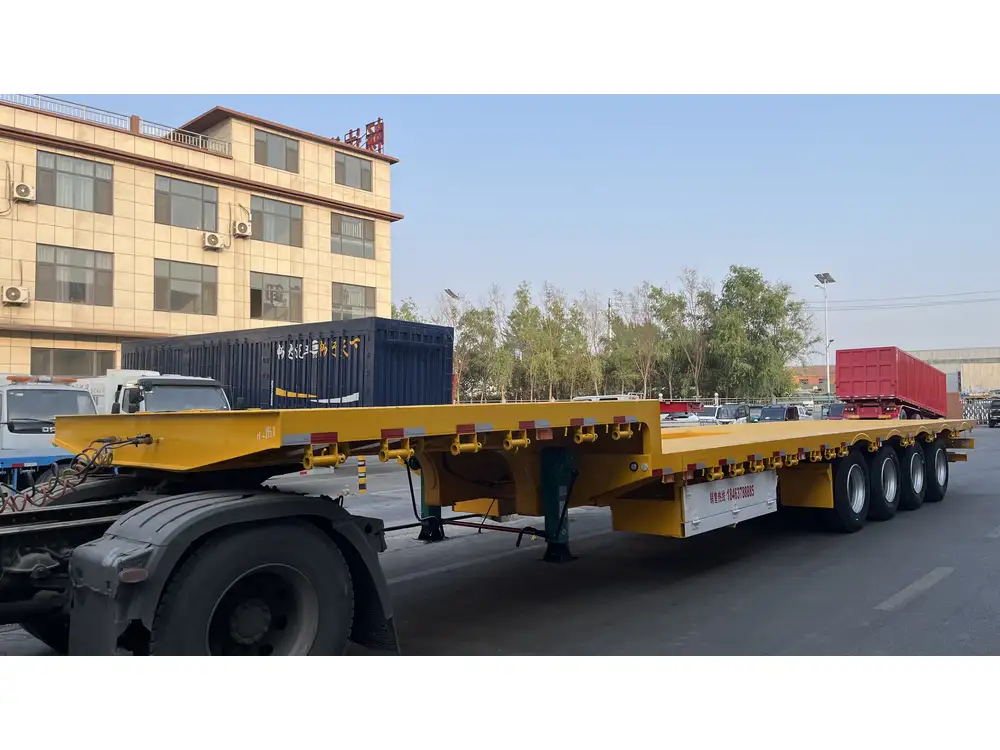Loading a U-Haul car trailer seems deceptively simple; however, the nuances often lead to improper loading, which can jeopardize safety and efficiency during transport. This article delves deep into the methodologies for correctly loading a car trailer, emphasizing best practices and crucial steps to ensure a successful experience.
Understanding U-Haul Car Trailers
U-Haul provides various types of car trailers designed to accommodate different vehicles. These trailers are typically classified into:
| Trailer Type | Max Weight | Best For |
|---|---|---|
| Auto Transport Trailer | 7,500 lbs | Cars, SUVs, and pickups |
| Tow Dolly | 4,250 lbs | Front-wheel drive vehicles |
Understanding the specifications of each type is essential for a safe and efficient loading process.
Assessing Your Vehicle and Trailer Capacity
Before embarking on the loading process, assessing both your vehicle and trailer’s capacity is vital:
- Check the Weight of Your Car: Reference the owner’s manual or vehicle specifications to understand your vehicle’s weight.
- Trailer Weight Limits: Know the maximum weight limit for the trailer you are using. Loading beyond this can lead to hazardous situations on the road.
- Consider Load Distribution: An unbalanced load can impact towing stability and result in accidents. Ensure the weight is evenly distributed across the trailer.

Step-by-Step Guide on How to Load a U-Haul Car Trailer
Step 1: Prepare the Trailer
Before loading, it’s imperative to prepare the trailer:
- Inspect the Trailer: Check for any damages, especially to tires, brakes, and hitch.
- Ensure Proper Setup: Position the trailer on a flat surface and engage the trailer brakes.
Step 2: Position Your Vehicle
Position your vehicle close to the trailer. Follow these guidelines:
- Align Your Vehicle: Ensure your vehicle is perfectly aligned with the ramp of the trailer.
- Use Hazard Lights: Activate your hazard lights for safety to alert other drivers.

Step 3: Load the Car
A. For an Auto Transport Trailer
- Utilize the Ramp: Drive slowly up the ramp, keeping the wheels straight.
- Monitor the Angle: Watch the angle as you ascend to avoid bottoming out. Adjust speed to prevent sudden movements that could destabilize the trailer.
- Center the Vehicle: Once up the ramp, ensure the vehicle is centered on the trailer to avoid load distribution issues.
B. For a Tow Dolly
- Position the Tow Dolly: Drive your vehicle onto the dolly, ensuring the front wheels are on the dolly platform.
- Secure the Vehicle: Once positioned, engage the dolly’s safety features and straps designed to keep the vehicle secure. Vehicle tires should fit snugly in the dolly’s wheel wells.

Step 4: Secure the Load
Properly securing your vehicle is essential to avoid any accidents and ensure safety during transportation:
- Use Ratchet Straps: Secure all corners using high-quality ratchet straps or chains.
- Check for Tightness: Ensure all straps are tight but not so tight that they damage the vehicle.
| Securing Method | Best For |
|---|---|
| Ratchet Straps | General use for standard vehicles |
| Chain Restraints | Heavy-duty applications |
| Tire Straps | Additional tire security on dollies |
Step 5: Check Everything Before Departure
Conduct a final inspection before hitting the road:
- Tire Pressure: Check that both the trailer’s and your vehicle’s tires are inflated to the proper levels.
- Lights Functionality: Test the trailer lights to ensure signal and brake lights function correctly.
- Safety Chains: Ensure safety chains are attached and free of slack.
Navigating Along the Road: Precautions and Tips
Loading is merely the first phase. Driving is where vigilance comes into play:
- Adhere to Speed Limits: Loading a trailer can significantly change your vehicle’s dynamics, making it essential to adhere to speed regulations.
- Avoid Sudden Movements: Gradual acceleration and deceleration are your allies. Sudden stops or maneuvers can destabilize the load.

Troubleshooting Common Issues While Loading
1. Vehicle Not Fitting
If your vehicle does not fit on the trailer:
- Measure Before You Rent: Always take measurements of your vehicle. Compare with trailer specifications before loading.
- Consult U-Haul: Contact U-Haul for advice on alternative trailers suited to your vehicle’s dimensions.
2. Straps Not Tightening
Should you face difficulties tightening the straps:
- Inspect for Damage: Ensure no damage on the straps. Frayed edges signal it’s time for a replacement.
- Adjust Hook Points: Sometimes adjusting the attachment points can aid in better tension while securing.

Conclusion
Loading a U-Haul car trailer involves a series of intricate steps that, when followed correctly, enhance safety during transportation. Understanding the characteristics of the specific trailer type, assessing your vehicle’s weight, and proceeding with a methodical loading strategy are paramount.
Key Points to Remember
- Thoroughly inspect both your vehicle and the trailer.
- Ensure an even weight distribution to maintain stability.
- Secure your vehicle using appropriate methods to mitigate risks while traveling.
- Always obey safety protocols while on the road.
By following these guidelines, you can transport your vehicle confidently, ensuring a smooth transition from one location to another. For those considering renting a U-Haul car trailer, understanding this detailed loading process is crucial, as it directly impacts the integrity of your vehicle’s transport and your overall experience.



